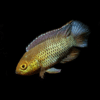To provide the best experiences, we use technologies like cookies to store and/or access device information. Consenting to these technologies will allow us to process data such as browsing behaviour or unique IDs on this site. Not consenting or withdrawing consent, may adversely affect certain features and functions.
The technical storage or access is strictly necessary for the legitimate purpose of enabling the use of a specific service explicitly requested by the subscriber or user, or for the sole purpose of carrying out the transmission of a communication over an electronic communications network.
The technical storage or access is necessary for the legitimate purpose of storing preferences that are not requested by the subscriber or user.
The technical storage or access that is used exclusively for statistical purposes.
The technical storage or access that is used exclusively for anonymous statistical purposes. Without a subpoena, voluntary compliance on the part of your Internet Service Provider, or additional records from a third party, information stored or retrieved for this purpose alone cannot usually be used to identify you.
The technical storage or access is required to create user profiles to send advertising, or to track the user on a website or across several websites for similar marketing purposes.
























Emily Carter (verified owner) –
I recently added a pair of Apistogramma Cruzi to my aquarium, and I couldn’t be happier! These dwarf cichlids are not only stunning with their vibrant colors, but they also exhibit such fascinating behaviors. After about a week of settling in, they started exploring their environment, and it’s been a joy to watch them interact. The shipping was superb; they arrived healthy and active, clearly well-cared for during transit.
I’ve previously kept other dwarf cichlids, but the personality of these guys really stands out. They’ve formed a lovely bond and are always darting around the tank, showing off their colors. I set up a few caves and plants for them, and they love darting between the leaves. Just a small tip: make sure not to overcrowd, as they can be territorial.
I highly recommend this pair for anyone looking to add some charm and character to their tropical fish setup. They truly elevate the beauty of the aquarium and have become a cherished part of my aquatic family. I’m already considering getting another pair soon!